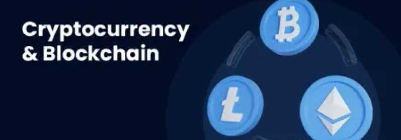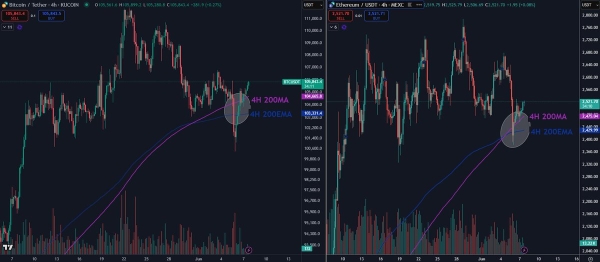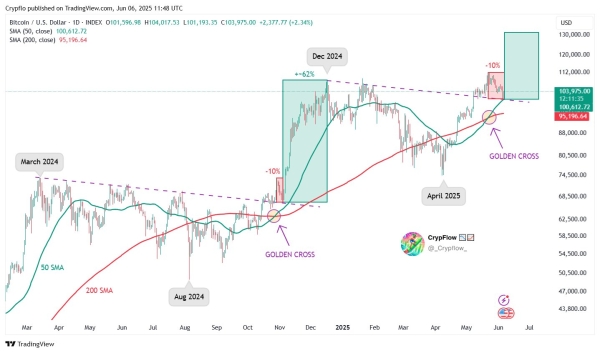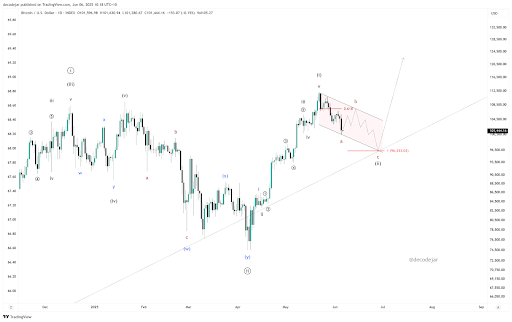Synopsis
The rally is helping the lending sector recover from the setbacks of 2022 and 2023, when numerous market participants went bankrupt due to a wave of risky loans. Crypto lending has nearly tripled in the first nine months of 2024 compared to the previous year. Although much of this activity is now occurring on decentralized apps, overall volume remains well below the peak levels seen in 2021.
The speculative froth that helped propel Bitcoin past $100,000 for the first time is spilling over into the long-battered crypto lending sector, with decentralised finance applications leading the way this time.
Bitcoin’s funding rate — the premium paid by traders to open long positions in the perpetual futures market — skyrocketed in November, and is up more than 10 times from what it was in early June, indicating a rising thirst for leverage, according to digital-asset data tracker CoinGlass. Bitcoin has more than doubled this year, topping $100,000 on Wednesday for the first time amid optimism crypto will move further into the mainstream during the upcoming Trump administration.
The rally is helping the lending sector rise from the ashes of 2022 and 2023, when a slew of market participants went bankrupt after a rash of questionable loans. Crypto lending nearly tripled through the first nine months of 2024 from a year-earlier. While more of that activity is taking place over decentralized apps, overall volume is still far short of what it was during the heydays of 2021.
Crypto Tracker![]() TOP COIN SETSDeFi Tracker17.91% BuyAI Tracker12.53% BuyWeb3 Tracker10.50% BuyCrypto Blue Chip – 510.35% BuyBTC 50 :: ETH 506.72% BuyTOP COINS (₹) XRP206 (4.41%)BuyEthereum337,389 (2.08%)BuyBitcoin8,430,408 (0.87%)BuyTether85 (0.1%)BuySolana19,954 (-1.79%)Buy“Demand for Bitcoin-backed loans has surged as those who held from before look to utilize their wealth to purchase homes, cars, and start businesses,” said Mauricio Di Bartolomeo, co-founder of Ledn, a crypto lending and financial services platform. “While those that are entering are looking to hold long-term positions, and learn they can utilize the asset as collateral to make other types of investments.”
TOP COIN SETSDeFi Tracker17.91% BuyAI Tracker12.53% BuyWeb3 Tracker10.50% BuyCrypto Blue Chip – 510.35% BuyBTC 50 :: ETH 506.72% BuyTOP COINS (₹) XRP206 (4.41%)BuyEthereum337,389 (2.08%)BuyBitcoin8,430,408 (0.87%)BuyTether85 (0.1%)BuySolana19,954 (-1.79%)Buy“Demand for Bitcoin-backed loans has surged as those who held from before look to utilize their wealth to purchase homes, cars, and start businesses,” said Mauricio Di Bartolomeo, co-founder of Ledn, a crypto lending and financial services platform. “While those that are entering are looking to hold long-term positions, and learn they can utilize the asset as collateral to make other types of investments.”
Did you Know?
The world of cryptocurrencies is very dynamic. Prices can go up or down in a matter of seconds. Thus, having reliable answers to such questions is crucial for investors.
View Details » 
![]()
Lenders have always been a vital pillar of the crypto market, providing critical liquidity and enabling trading in an inherently volatile environment. Banks have been hesitant to provide capital to market participants due to regulatory uncertainties surrounding the industry. This void led to the explosive growth of crypto lenders during the 2021 bull market, with companies like Genesis and BlockFi clearing the path for crypto funds and other borrowers in the industry to access much-needed capital amid the ultra-zero-interest-rate macroeconomic environment before the sector imploded.
A reminder of how messy it got back then was on display this week, when Alex Mashinsky, the charismatic co-founder of crypto lender Celsius Network, pleaded guilty to two counts of fraud in one of the last cases stemming from the widespread upheaval that shook digital currencies two years ago. Celsius, a crypto lender that collapsed in 2022 with more than $1 billion in debt, is in the process of paying out more than $3 billion to its creditors.
Lending activity is still significantly smaller than it was three years ago. Through the third quarter, lending via DeFi apps and centralized providers stood at nearly half of what it was over the first nine months of 2021, according to Galaxy Research. Still at $36.8 billion, it’s nearly triple the first nine months of 2023, thanks to demand spurred on by the introduction of crypto exchange-traded funds in the US and President-elect Donald Trump’s promise of more favorable regulation.
DeFi lender apps handled nearly $31 billion in funds in the first nine months of the year, while nine tracked centralized providers only lent out $5.8 billion, according to Galaxy Research. DeFi apps let borrowers and lenders work directly with each other, typically require overcollateralization of loans, and are often seen as safer.
New High in Locked Tokens
That has DeFi lenders like Aave, JustLend and Compound flourishing. The so-called total value locked in lending apps on the Ethereum blockchain recently exceeded its 2021 peak, according to data tracker DeFiLlama.
Trading desks and digital-asset funds are borrowing for market arbitrage, as well as shorting and speculating on altcoins, whose value has ballooned in the latest rally.
“A decent amount of leverage was added overnight, with funding levels ~75% for the majors,” Edward Chin, co-founder of Parataxis Capital, sad on Thursday. “During the height of the last bull market, funding rates reached above 1,000%, so one could argue we are not at stretched levels yet.”
Loan supply remains limited, however, as both retail and institutional investors are being offered smaller returns for lending cash and tokens to earn income than in the last cycle. Many speculators would rather instead pour their coins into other corners of the markets such as memecoins, where a newly created token can skyrocket in a day.
“Now if you’re buying tokens that go up 1,000% in 24 hours, there’s really no yield component of it,” said Anthony DeMartino, chief executive officer and co-founder of crypto lender Trident Digital. “This is pure speculation and the returns are so much larger than the last cycle on altcoins. Why do I care about earning an extra 10% yield when I earn 10% in the last 10 minutes?”
Caution Remains
Many market participants are still weary of lending their tokens after the collapse of Celsius and a slew of other centralized lenders. In the 2021-2022 bull cycle, some lenders were paying double-digit yields on loans that sometimes were not backed at all. Some of these risky loans, such as to Three Arrows Capital, which collapsed in 2022, went bad.
Many institutional lenders are still staying on the sidelines. Jeffrey Park, portfolio manager and head of Alpha strategies at Bitwise Asset Management, said that his firm used to have a fund to lend to crypto lenders such as Genesis on behalf of their investors prior to the collapse of the now-notorious FTX exchange.
“We’re not doing that anymore,” Park said. “We never lost money at Bitwise with any of these counterparties. So ultimately it wasn’t a risk-related decision. It was more of a client demand decision, which is after FTX, I don’t think anybody was interested in earning yield in a fashion where they thought that their principal downside risk might be very high.”
Some centralized prime brokerages and exchanges are stepping in to fill the gap. The loan book at Galaxy Digital’s lending desk is up by 20% since mid-August, according to a representative of billionaire Michael Novogratz’s firm. Galaxy’s average loan book during the three months ended in September was $863 million, up 23% from the quarter before.
“We’ve definitely seen an uptick in demand on our side and if you couple that with going into the year-end, even in TradFi, there’s always demand for cash,” said Jason Urban, Galaxy’s global head of trading. “It’s even more pronounced inside crypto.”
Demand for crypto exchange Kraken’s lending offerings is “off the charts,” according to Tim Ogilvie, global head of institutional at Kraken, which wasn’t offering lending services in 2021. Up until November, Kraken’s margin and lending books were up 246% year-over-year.
“Every single day we are being approached by tons of people looking to get more exposure,” Ogilvie said. “There’s a very bullish feeling right now and they want more leverage.”


























